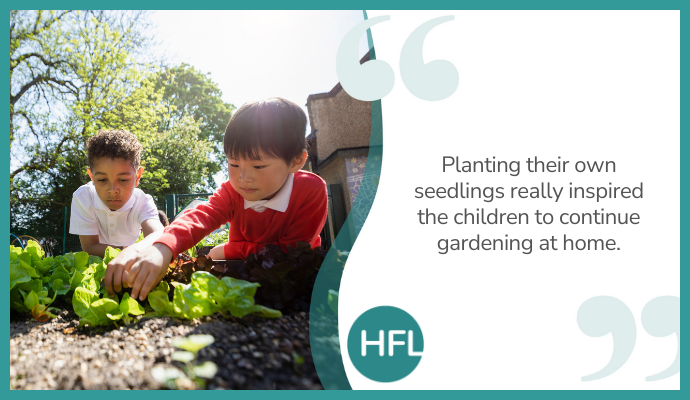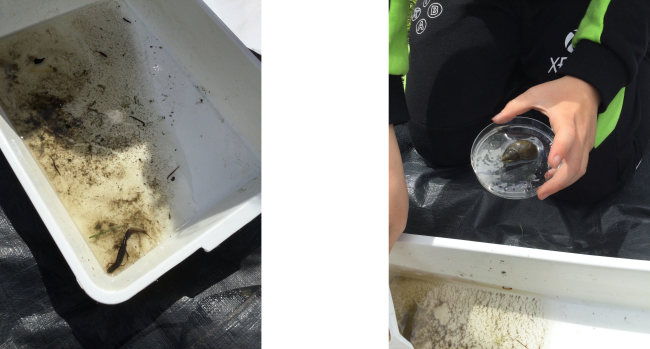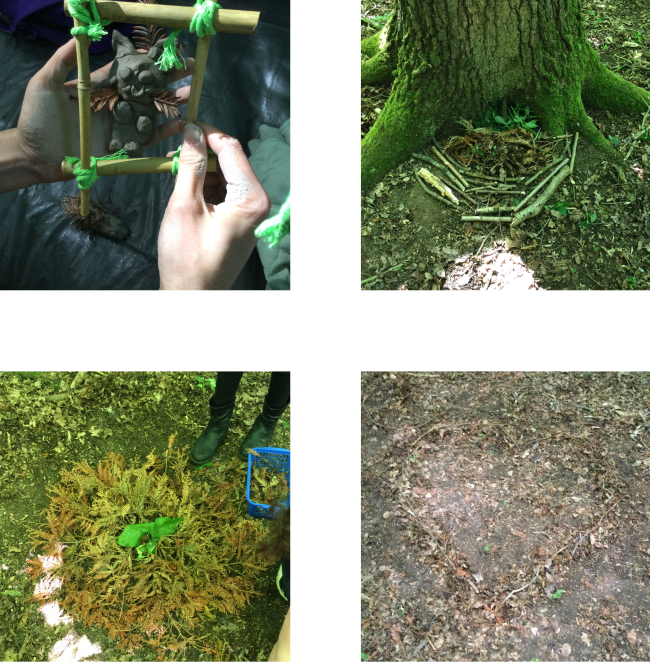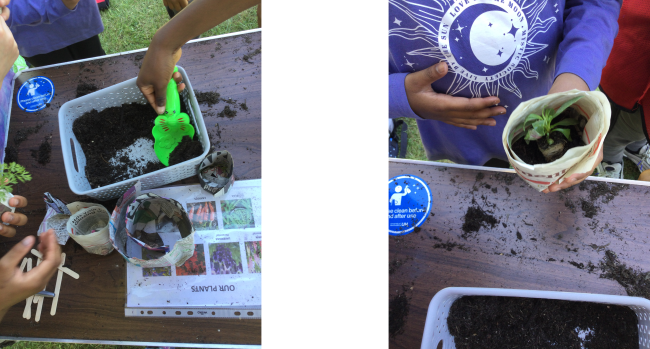
In Summer 2022, Year 4 class had the opportunity to attend the Pop-Up Outdoor Education Centre at Bayfordbury run by the University of Hertfordshire. We had a full day of sessions run by the students and staff of the postgraduate courses in outdoor environmental education.
Suffice it to say that our children LOVED their day out. Upon arrival, the children made little ‘photo frames’ out of sticks and twine and they were able to use these to help record the rest of their day. This was a great idea for all the children, but particularly for those who sometimes struggle to focus as it created a very effective and very real way of recording their observations from the day.
Pond dipping and mini-beasts

Pond dipping is always a hit with children, and it linked nicely to our Science unit: ‘Living things and their habitats’. The pupils were given a range of classification keys and identification sheets that allowed them to group, identify and name a variety of pond life. The skill was then repeated when we went on mini-beast hunts, where they used similar types of classification keys and sheets to identify even more living things in our local forest and grassland environments. The class had studied classification keys in the previous autumn/spring terms using our own school grounds, so it was a great opportunity to review and consolidate the children’s learning. The children felt incredibly confident collecting living things and ensuring they could safely return them to their homes. What was really amazing was that they were able to see a number of different living things that they hadn’t seen when we did this activity at school. This led to follow up conversations regarding different habitats in different places and how sometimes even a ‘pond habitat’ that is quite close by may still have different animals living in it!
Links to art

There were some fantastic links made between what the children had learned in Years 1, 2 and 3 about plants and artists that use nature to create art (particularly Andrew Goldsworthy). When we were looking at classification keys earlier in the year, we also focused on leaves and the different types of trees that we had in our local environment as well as what makes them unique. This understanding was particularly evident as the children began to make their own Goldsworthy-inspired piece and were talking about the different characteristics of the leaves and needles they could find. This link to art was brilliant and an interesting way to engage children with the nature around them.
Links to English
In the afternoon, the children were then given the opportunity to use what they’d learned from pond-dipping and mini-beast hunts to write poetry. This pre-learning allowed the children to use specific names of the creatures they had found and to describe carefully the habitats they had explored.
Becoming gardeners

Our final activity was the children’s favourite – planting many, many, MANY of their own flowers and fruit/vegetable plants. They created their own ‘plant pots’ out of newspaper (and were incredibly intrigued by the fact that they could put these pots directly in the ground without removing the paper). They were taught how to care for their new plants and what to expect from their growth. The children all took their plants home and planted them in their own gardens. At the end of the summer term, many of them stated that their plants were still growing strong.
Woodland Trust
When we returned to school, we completed a few follow up activities from the Woodland Trust that linked to our Forest School sessions – in particular the children created their own living thing that lived in one of the habitats that we had seen that day.
The outing really allowed our children to connect to nature and experience their learning first hand. The smiles and excitement really made the day worthwhile. It was such a success, and we very much appreciated the invitation from the University of Hertfordshire.
Voices from the Classroom
Our new blog series, Voices from the Classroom, allows primary science teachers to share particularly effective practical experiences they have had with their classes. It’s a great way to showcase what your school is doing and written guidance and examples are available for those of you wishing to participate.
If this is something you would be interested in participating in, please e-mail Charlotte Jackson charlotte.jackson@hfleducation.org


